Advertisements
Ratings
“What is Google AdSense?
Where and how is Google AdSense used?
The article below has answers to all your questions.
Please read this article carefully.”
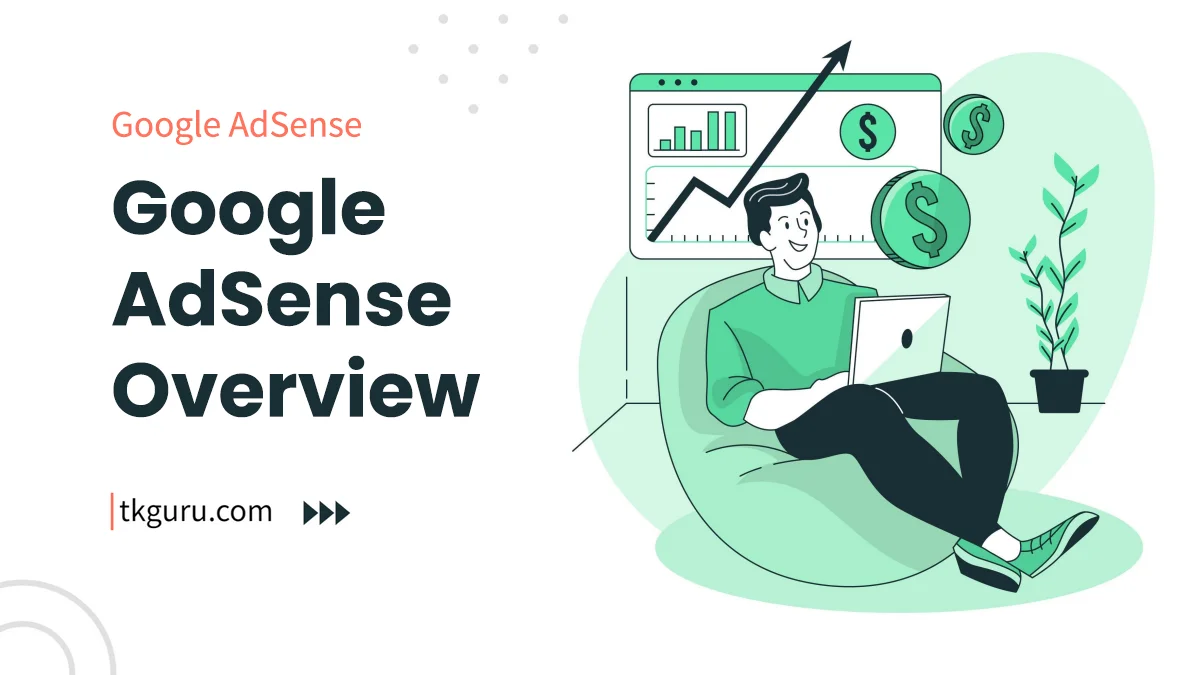
Google AdSense – Google AdSense is a service run by Google. In this service, Google shows ads on your website by sensing the content and visitors of your website.
If you have a Google AdSense approve account, then you can use it to place Google’s ads on your website and if you do not have a Google AdSense approve account, then you must first create a website and write useful and meaningful content on it. Only Google will approve AdSense for your website.
Contents
- 1. What is Google AdSense?
- 2. What are Google AdSense types?
- 3. How does Google AdSense work?
- 4. How to earn money from Google AdSense?
- 5. How to Get Approved for Google AdSense: A Step-by-Step Guide
- 6. Google AdSense: A Beginner’s Guide to Monetizing Your Website
- 7. How to Optimize Your Website for Google AdSense: Best Practices and Strategies
- 8. Tips and Tricks for Maximizing Your Google AdSense Earnings
- 9. How to Track and Analyze Your Google AdSense Performance
- 10. Google AdSense Alternatives: Exploring Other Ways to Monetize Your Website
- 11. Common Google AdSense Mistakes to Avoid for Better Results
- 12. Understanding Google AdSense Policies: Avoiding Common Violations and Penalties
- 13. Google AdSense vs. Google Adwords: What’s the Difference?
- 14. Google AdSense for YouTube: Monetizing Your Video Content
- Google AdSense FAQs
1. What is Google AdSense?
AdSense (Google AdSense) is an advertising service run by Google. This program has been designed by Google for website publishers.
By joining this program, website publishers show targeted text, video or image advertisements on the pages of their website.
Google pays website publishers when website visitors view or click on these advertisements.
2. What are Google AdSense types?
Google currently operates several different AdSense programs, depending on the type of content you place ads on. Some of the common AdSense programs are given below:
- AdSense for content: Placing ads on the website.
- AdSense for search: Placing ads on the search results of the website.
- AdSense for video: Placing ads on YouTube video.
- AdSense for mobile applications: Placing ads on Android and iPhone applications.

3. How does Google AdSense work?
Website publishers only have to create a free AdSense account to show advertisements on their website and copy the given code and paste it on their website.
Whenever a visitor sees or clicks on these ads, AdSense pays you on a per-impression or per-click basis.
AdSense advertisements are controlled and managed by Google. You can join the Google AdSense program for free.
4. How to earn money from Google AdSense?
Google AdSense gives website publishers the opportunity to earn money from their online content.
AdSense matches text and display advertisements to your website based on your content and visitors.
These advertisements are created and paid for by advertisers who want to advertise their products. These advertisers pay different money for different advertisements.
Here we can understand how AdSense works in three stages:
- You provide advertisement space on your website.
- Highest paying ads show on your website.
- You get paid.
Now you must have understood what is Google AdSense, how it works and how you can earn money from it.
Google AdSense program is free to join, so if you have a website that is suitable for Google AdSense ads, then join the AdSense program and place ads on your website and earn money.
5. How to Get Approved for Google AdSense: A Step-by-Step Guide
Getting approved for Google AdSense can be a straightforward process if you follow these steps:
- Ensure that your website complies with Google’s policies: Google has strict guidelines on the types of websites that can display AdSense ads. Ensure that your website’s content is original, your design is user-friendly, and your website meets Google’s terms of service.
- Create original and valuable content: Google prioritizes websites that have high-quality content that is unique, informative, and engaging. Aim to produce original and informative content that will keep your audience engaged.
- Increase your website’s traffic: Google looks for websites that have a steady stream of traffic. Focus on creating SEO-friendly content that will rank well on search engines and drive more traffic to your website.
- Set up Google Analytics and Search Console: Google Analytics and Search Console are essential tools that can help you track your website’s performance and identify areas for improvement.
- Apply for Google AdSense: Once you’ve met the requirements above, you can apply for Google AdSense by creating an account and submitting your website for review. Google will review your website and either approve or reject your application.
- Follow Google’s guidelines: Once you’re approved, it’s essential to follow Google’s guidelines on ad placement and content. Violating these guidelines could lead to suspension or termination of your AdSense account.
By following these steps, you can increase your chances of getting approved for Google AdSense and start monetizing your website.
6. Google AdSense: A Beginner’s Guide to Monetizing Your Website
Google AdSense is an advertising program run by Google that allows website owners and bloggers to monetize their content by displaying targeted ads on their site.
AdSense is free to join and works by matching ads to your site’s content, ensuring that your visitors see relevant ads that are more likely to be clicked.
Here are some steps to get started with Google AdSense:
- Sign up for an AdSense account: You can sign up for an AdSense account on the Google AdSense website. Make sure to read and understand the program policies before signing up.
- Add AdSense code to your website: Once you’ve been approved for AdSense, you’ll receive a code to add to your website. This code will display targeted ads on your site.
- Customize your ad units: You can customize the appearance of your ad units to match your website’s design and choose where the ads will be displayed on your site.
- Monitor your earnings: AdSense provides detailed reports on your earnings and ad performance. You can use this information to optimize your ad placements and improve your earnings.
- Adhere to AdSense policies: AdSense has strict policies that govern how ads can be displayed on your site. Make sure to follow these policies to avoid being banned from the program.
Overall, Google AdSense can be a great way to monetize your website or blog. However, it’s important to understand that earning significant revenue from AdSense requires a significant amount of traffic and high-quality content.
7. How to Optimize Your Website for Google AdSense: Best Practices and Strategies
Optimizing your website for Google AdSense can help increase your earnings and provide a better experience for your users. Here are some best practices and strategies:
- Ad Placement: Place ads where they are likely to get the most clicks, such as in the content, above the fold, and near the top of the page. Avoid placing ads in places that may confuse or frustrate your users.
- Ad Formats: Experiment with different ad formats, such as text ads, display ads, and link units, to find what works best for your site. Use responsive ads to ensure that ads are displayed optimally on all devices.
- Ad Colors: Use ad colors that match your website’s color scheme to make ads look more natural and less like ads. Test different color combinations to find the most effective one.
- Ad Sizes: Use larger ad sizes where possible, as they tend to perform better. The most popular sizes are 336×280, 300×250, and 728×90.
- Quality Content: Provide high-quality content that is relevant to your audience. This will help attract more visitors to your site and increase the likelihood that they will click on your ads.
- Ad Density: Avoid placing too many ads on your site, as this can be distracting and may turn off your visitors. Google recommends a maximum of three ad units per page.
- Traffic Sources: Focus on getting traffic from high-quality sources, such as search engines, social media, and email marketing. Avoid using traffic exchanges or other low-quality sources, as this can hurt your AdSense account.
By following these best practices and strategies, you can optimize your website for Google AdSense and increase your earnings while providing a better experience for your users.
8. Tips and Tricks for Maximizing Your Google AdSense Earnings
Here are some tips and tricks to maximize your Google AdSense earnings:
- Optimize ad placement: Experiment with ad placement on your website to find the best-performing spots. Ad placements above the fold and within the content tend to perform well.
- Use responsive ads: Responsive ads automatically adjust their size to fit the screen they’re being viewed on, making them more versatile and effective at generating clicks.
- Use multiple ad units: Use multiple ad units on your website, but don’t go overboard. The maximum number of ad units per page is three.
- Experiment with ad formats: Try different ad formats to see what works best for your website. Text and display ads are the most popular formats, but link units and matched content ads can also be effective.
- Choose high-paying keywords: Use Google’s AdSense Keyword Planner to find high-paying keywords related to your website’s content.
- Optimize your website’s content: Create high-quality, relevant content that attracts visitors and keeps them on your website for longer.
- Focus on user experience: Make sure your website is easy to navigate and doesn’t have any distracting elements that could deter visitors from clicking on your ads.
- Monitor your performance: Use Google’s AdSense dashboard to monitor your performance and track your earnings over time. Use this data to make adjustments to your ad strategy as needed.
- Don’t violate Google’s policies: Adhere to Google’s policies to avoid having your AdSense account suspended or terminated. This includes avoiding click fraud, placing ads on prohibited content, and not clicking on your own ads.
- Keep testing and experimenting: Always be testing and experimenting with your ad strategy to find what works best for your website and audience.
9. How to Track and Analyze Your Google AdSense Performance
To track and analyze your Google AdSense performance, you can use the following steps:
- Log in to your Google AdSense account and navigate to the “Performance Reports” tab.
- Select the report type you want to view, such as “Overview” or “Ad Units.”
- Customize your report by selecting the date range and metrics you want to track.
- Use the different visualization options, such as tables, graphs, and charts, to help you understand your data.
- Identify trends and patterns in your performance data, such as changes in ad click-through rates (CTR) or revenue.
- Use the insights gained from your analysis to optimize your AdSense performance, such as adjusting your ad placements or experimenting with different ad formats.
- Consider using additional tools, such as Google Analytics, to gain deeper insights into your website traffic and user behavior.
By regularly tracking and analyzing your AdSense performance, you can make data-driven decisions that help you optimize your website’s monetization potential.
10. Google AdSense Alternatives: Exploring Other Ways to Monetize Your Website
There are several Google AdSense alternatives available for website monetization. Some of the most popular ones include:
- Media.net: This is a contextual advertising network powered by Yahoo! and Bing. It offers targeted ads based on the content of your website.
- Amazon Associates: This is an affiliate marketing program that allows you to earn a commission by promoting Amazon products on your website.
- AdThrive: This is a premium ad network that offers high-paying ads to publishers. However, it has strict requirements for website traffic and content quality.
- PropellerAds: This is a popular ad network that offers a range of ad formats including push notifications, pop-unders, and native ads.
- Infolinks: This is a text-based ad network that offers in-text ads, in-fold ads, and in-tag ads.
- Ezoic: This is an AI-driven ad network that uses machine learning to optimize your website’s ad placement and increase your revenue.
It’s important to note that different monetization strategies work better for different types of websites, and you may need to experiment with different options to find the best fit for your site.
11. Common Google AdSense Mistakes to Avoid for Better Results
Some common Google AdSense mistakes to avoid for better results include:
- Clicking on your own ads: Clicking on your own ads to increase earnings is against AdSense policies and can lead to account suspension.
- Invalid clicks: Avoid using services or software that generate invalid clicks, which can also result in account suspension.
- Placing too many ads: While it may be tempting to place as many ads as possible on your website, this can be counterproductive as it can make your website appear spammy and cluttered.
- Placing ads in non-strategic areas: Ensure that your ads are placed in strategic areas of your website, such as near the top or within the content.
- Violating AdSense policies: Make sure you read and understand AdSense policies to avoid any violations, such as placing ads on adult or violent content.
- Not optimizing ad formats: Experiment with different ad formats to find the ones that perform best on your website.
- Not optimizing ad placement: Test different ad placements to find the ones that generate the highest click-through rates.
- Ignoring data and analytics: Monitor your AdSense performance regularly and use data and analytics to make informed decisions about your ad strategy.
- Not diversifying your revenue streams: While AdSense can be a lucrative source of revenue, it’s important to explore other ways to monetize your website to avoid relying too heavily on one source of income.
- Failing to disclose AdSense participation: Ensure that you disclose your participation in the AdSense program to your website visitors.
12. Understanding Google AdSense Policies: Avoiding Common Violations and Penalties
Google AdSense is a popular way to monetize a website, but it is important to understand and follow the platform’s policies to avoid any violations or penalties. Here are some common violations to avoid:
- Click fraud: Encouraging or incentivizing users to click on AdSense ads is strictly prohibited. This can include clicking on ads yourself, using automated software or bots to generate clicks, or encouraging others to click on ads.
- Invalid traffic: AdSense is designed to show ads to real human visitors, not bots or other non-human traffic. Generating invalid traffic or clicks can result in account suspension or termination.
- Content violations: AdSense policies prohibit certain types of content, such as adult content, copyrighted material, and illegal activities. Ensure that your website content is compliant with AdSense policies.
- Placement violations: AdSense ads must be placed in locations that comply with Google’s policies. For example, ads cannot be placed too close to other clickable elements or appear to be part of the website’s content.
To avoid violations and penalties, it is important to carefully read and understand Google AdSense policies and ensure that your website and ad placement comply with these policies.
13. Google AdSense vs. Google Adwords: What’s the Difference?
Google AdSense and Google AdWords (now known as Google Ads) are both advertising platforms offered by Google, but they serve different purposes.
Google AdSense is a program for website publishers to monetize their content by displaying targeted ads on their site.
The ads are chosen by Google based on the content of the page and the visitor’s browsing history, and publishers earn revenue when visitors click on the ads or view them.
Google Ads, on the other hand, is an advertising platform for businesses to create and display ads across Google’s search network, display network, YouTube, and other properties. Advertisers bid on keywords to show their ads to users who are searching for those keywords, or to users who fit specific demographic or interest criteria.
In summary, Google AdSense is for publishers who want to monetize their content through advertising, while Google Ads is for businesses who want to advertise their products or services.
14. Google AdSense for YouTube: Monetizing Your Video Content
Google AdSense for YouTube is a program that allows content creators to monetize their videos by displaying ads. It works by displaying ads before, during, or after a video, and creators earn a percentage of the revenue generated from the ads.
To qualify for AdSense for YouTube, a channel must have at least 1,000 subscribers and 4,000 hours of watch time in the past 12 months.
Once approved, creators can choose which videos to monetize and have the option to customize the type of ads that appear on their content.
The revenue earned from AdSense for YouTube is deposited into the creator’s AdSense account, which can then be withdrawn once a certain threshold is met.
Google AdSense FAQs
Google AdSense is an advertising program that allows website owners and bloggers to earn money by displaying targeted ads on their websites. The program is run by Google and allows advertisers to bid on ad space on websites.
Google AdSense works by allowing website owners to display ads on their websites. Advertisers bid on ad space, and the highest bidder's ad is displayed on the website. Website owners earn money for each click or impression on the ads.
The amount of money you can make with Google AdSense varies based on several factors, including the number of visitors to your website, the niche of your website, and the ad placement. Generally, website owners can earn between $0.01 to $5 per click on an ad.
To sign up for Google AdSense, you must first have a website or blog. Then, you can go to the Google AdSense website and follow the steps to create an account. Once your account is approved, you can begin displaying ads on your website and earning money.
To join Google AdSense, you must have a website or blog that complies with the program's policies and guidelines. Your website must have original content and receive regular traffic. Additionally, you must be at least 18 years old to join Google AdSense. What is Google AdSense?
How does Google AdSense work?
How much money can I make with Google AdSense?
How do I sign up for Google AdSense?
What are the requirements for joining Google AdSense?
| Web Hosting | Website |
| WordPress | Google Adsense |
| SEO | Affiliate Marketing |
| Blogging | YouTube |
Recent Posts
- 9 Proven Ways to Increase Page CTR by 50%
- 9 Proven Ways to Increase Page RPM by 50%
- A Detailed Guide to CPC, CPA, CTR, CPM, RPM
- Top 10 High CPC Countries: Maximizing Ad Revenue in Lucrative Markets
Related Tags
google adsense payment, google adsense login, average monthly income from google adsense, google adsense login 2, youtube adsense earnings, make money with google adsense without a website, google adsense earnings per click, google adsense sign up

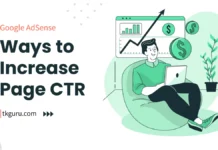
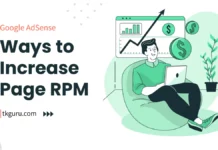
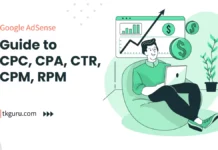
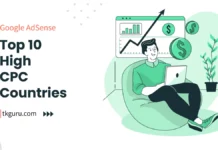
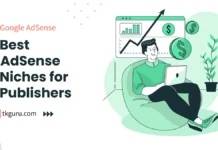
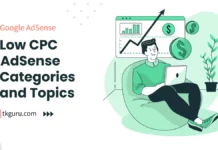
हैलो सर जी,
मेरी website पर 50 के आस-पास पोस्ट हैं और 500-600 पेज व्यूज डेली हैं ।
क्या मैं adsense के लिए अप्लाई कर सकता हूँ ?